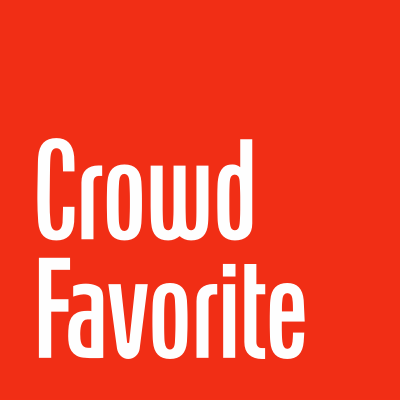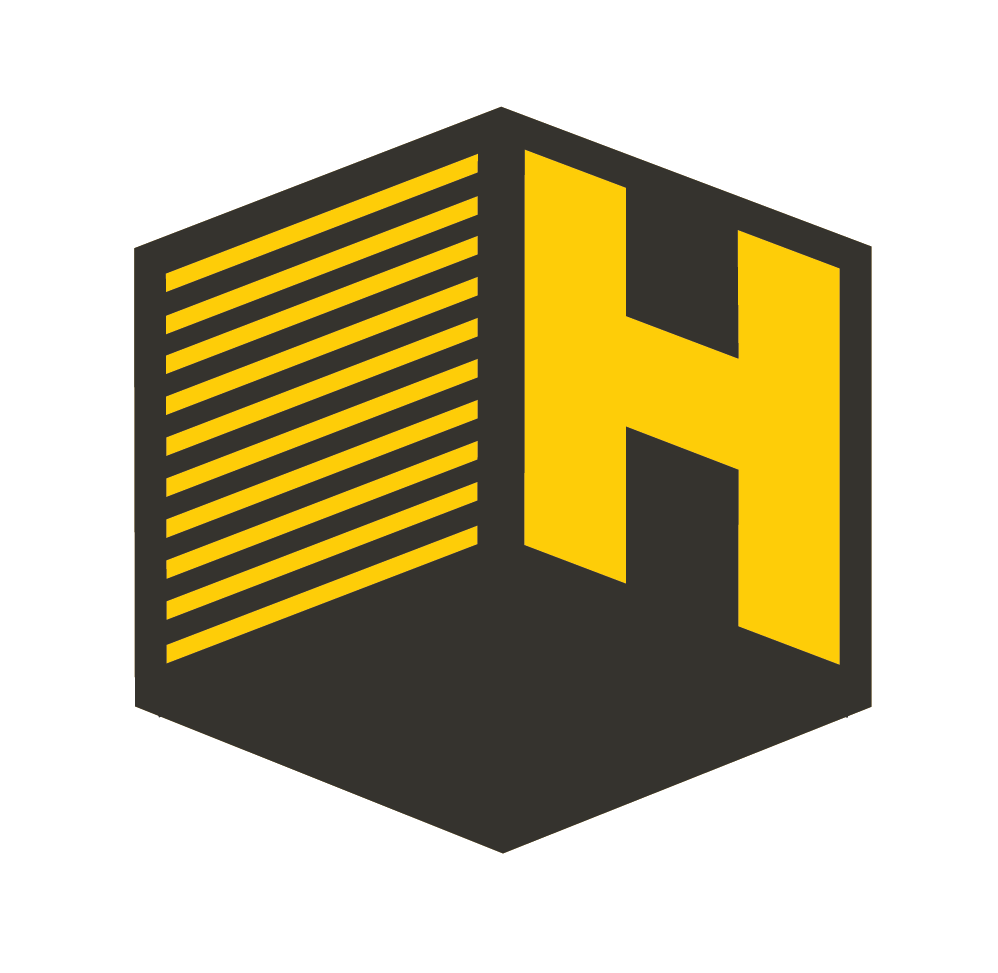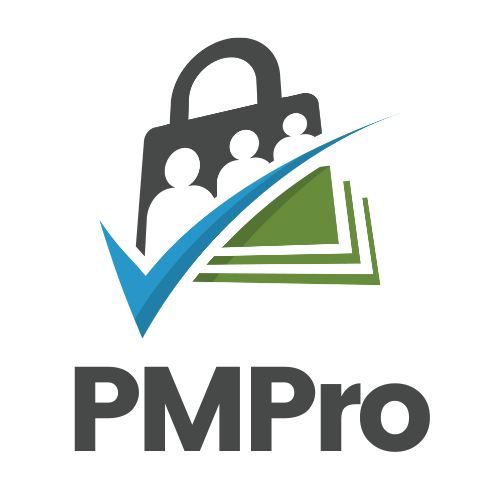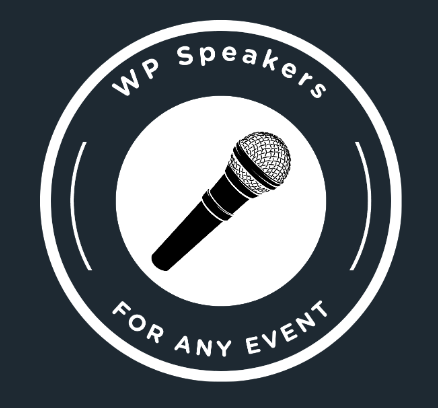Being Someone with a Disability in Tech
Episode 2: What is it like being a person with disabilities in tech?
Accessibility is becoming a larger and larger conversation over time, but how often do you sit down and listen to people with disabilities speak on what it’s like working in tech with their disability? In this episode Nyasha Green talks to Dale Reardon, Ahmed Khalifa, and Birgit Olzem about challenges to learning online, ableism and ignorance, accessible websites, and more.
Our Panelists

Ahmed Khalifa
Ahmed is a deaf/hard of hearing person who is passionate about tech and web accessibility. Because of his deafness, Ahmed also has real-life experiences on what it’s like to not be able to access video-based content if they are not captioned. Hear Me Out CC
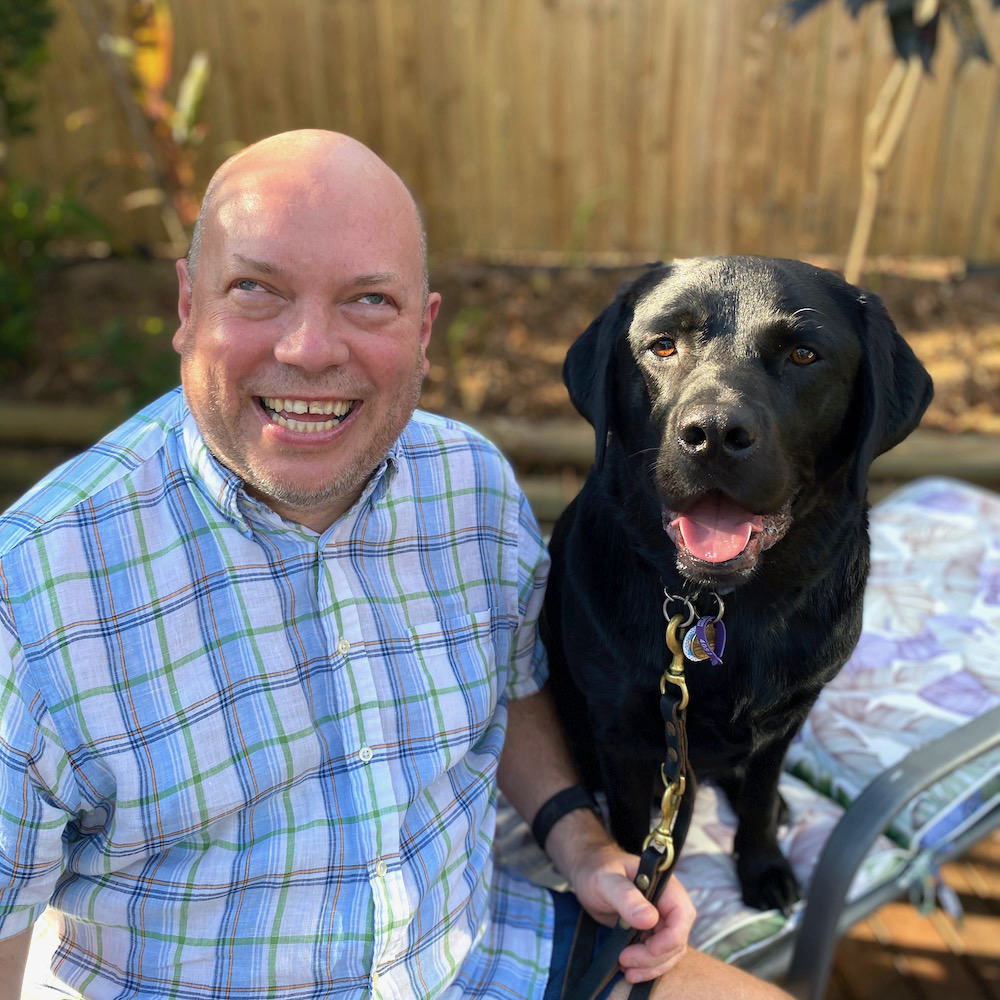
Dale Reardon
Dale Reardon is from Australia and operates Tourism Success to provide tourism and hospitality businesses with marketing training and advice. Dale is a lawyer but asks that we not hold that against him. He loves everything to do with France. Wine, food, and champagne. Dale is legally blind and uses a guide dog, Cookie. Tourism Success

Birgit Olzem
Birgit Olzem, a WordPress enthusiast extraordinaire, juggles diverse roles and advocates for mental health awareness, diversity, and unsung contributors. A proud mother and grandmother, she also consults on personal branding and explores surface pattern design. Birgit embodies the WordPress spirit, champions community, and connects humanity with humor and warmth. Coach Birgit
Episode Transcript
What is it like being a person with a disability in tech?
Nyasha Green:
Hi, and welcome to the Inclusive Webinar series. Today’s episode will be on what it’s like having a disability and working in tech. Thank you to our sponsors. You can learn more about them via the links in the description of this video or at underrepresentedintech.com/webinar.
Introductions
I’m Nayesha and I’ll be your moderator for today. With me, I have Birgit, a WordPress enthusiast extraordinaire who juggles diverse roles and advocates for mental health awareness, diversity, and unsung contributors. Ahmed is a deaf/hard-of-hearing person who is passionate about tech and web accessibility. Because of his deafness, Ahmed also has real life experiences on what it’s like to not be able to access video-based content if they are not captioned. And Dale Reardon is from Australia, operates tourism success to provide tourism and hospitality businesses with marketing, training, and advice. Dale is a lawyer but asks that we not hold that against him. He loves everything to do with France, wine, food, and champagne. Dale is legally blind and uses a guide dog, Cookie.
All right. Let’s get started.
Question 1: What do you wish people knew or understood about what it’s like to be a person with a disability in tech?
Ahmed Khalifa:
I’m happy to start. Lots of thoughts about this. The one thing for me is that especially if it’s online or we’re talking in video calls, it’s not always obvious. It’s difficult enough when you have, let’s just say invisible disability in the offline world. It’s not obvious that I have… My hearing is on. It’s not very obvious here. But online, I think it’s even more difficult. So there’s an assumption, I would say, that you’re “fine.” You can access everything. I don’t see anything “wrong” with you. So that is the immediate assumption for me. Then you have to fight against that and it’s been quite challenging to make people take notice and be serious about, “Look, I have access needs and here’s what I need.” But it’s an ongoing thing and I think it’s part of the online culture. It’s just not obvious. So that’s why I guess I’m here, talk about it a bit more.
Dale Reardon:
Yeah. I am happy to speak next. As you said in the introduction, I’m blind myself and as you said, in the offline world, people will see my guide dog and realize or ask that there is some problem. But again, online, it’s not as obvious. So quite often, I may need to either ask for assistance in terms of accessibility or explain to website developers and companies and businesses why I can’t use their website or their solution and I need some alternative.
In general terms also, I know that Underrepresented in Tech, bringing this series to us all is very much a correct statement. We are underrepresented, but I also very much like the phrase coined by Alan Hamilton, which is “underestimated founders” because I find so often there’s what’s called in the blindness community the tyranny of lack of confidence, the tyranny of low expectations, that everyone else often thinks that you won’t be able to perform as well or make a full contribution or bring as much to a team or a project and to let them know that, yes, you may need some accommodations, but in all sorts of ways, you bring a very valuable perspective to any project or business or opportunity, and that any difference I’ve found when working with other people with disabilities, a difference or a problem or an alternative communication means does not mean any lack of or lower intelligence. I find so many business people think that if you have trouble communicating then you mustn’t have the same intelligence as them. So that is often very frustrating as well.
Birgit Olzem:
Yeah, thank you. I was just going in the same direction as Dale, to say I wish that people understand that being a person with disability and tech doesn’t define our entire professional experience, but it is an undeniable shape and profound and our unique ways how we understand how things work, especially if you are dealing with neurodivergent invisible capabilities or disabilities, to extract content but also consume content.
On the other hand, the obvious disabilities, it’s often difficult for people to attend to WordPress events. We have on one part the digital accessibility but also the accessibility to go to events, especially if you don’t have any visible conditions or limiting conditions. From this perspective, I see that someone who doesn’t have to deal with this doesn’t have the understanding why someone needs an other form of access, like the common sense, maybe, approaches.
But also we need more empathy within the field of tech to support an individual who has a form of disadvantage in term of digital accessibility, but also in physical accessibility, but also to feel included and also represented as you both already said. If someone doesn’t see his or her or themselves represented in a group of tech, they may doubt if they fit in, but maybe they are the gem the community, for instance, might need for a fresh perspective.
Question 2: What is the biggest challenge facing you as a person in tech with a disability right now?
Ahmed Khalifa:
I’ve got one in mind. For me, the fact that more than ever before, content are video-based. We can pinpoint social media being a big factor in it, and TikTok has really ramped up even more in terms of if videos are the most engaging form of content now. But that’s a problem for me, is there are more videos now, but the high majority are not captioned. It can be, again, frustrating because then you can have, for example, maybe a guide on how to use certain software and they provide a video-based guide, and more often not for me, you don’t really see them captioned. If you expect me to use your software and you have instructions on how to set it up or how to configure it, but you don’t caption your video, then there’s a flaw in there somewhere where if you want people to use your product but you don’t make it accessible, then that’s a bit weird in my opinion.
I have noticed even more, like the past 10 years, it’s just become a bit of a boom now in terms of videos and it makes sense. It’s very engaging, very personable. You can engage with the creator that way. You can see them or feel them or hear them or kind of engage with them in different ways rather than, for example, text, which makes sense. But if you want me to be part of the experience, if you want me to engage with your videos, then I would say, well, let’s caption it because then so many people who benefit, not just those who are deaf or hard-of-hearing, so many people will benefit from it as well.
I think the most obvious example would be people who can, let’s just say hear in a “normal” way, well, you could be in an environment where it’s very noisy or you need to be quiet so you mute the videos, and if you want to watch it but you’re muting the videos, then you want to follow along. More often than not, people are on the bus or something; they follow the videos and they want to do that, but we can’t just depend on auto-caption. It’s part of a solution but not full solution.
It’s another thing for me is it’s just frustrating, again, on social media especially, but website, videos are so powerful, but only if I can connect with it and that would be with caption. So that’s my perception of one of the biggest challenge, I would say, in tech right now.
Dale Reardon:
There’s so many people, including myself, that don’t like learning from videos anyway. I lost my sight at age 17, but even before that, I’ve always preferred written tutorials to videos. You could bookmark, you can look at the words, you could search through it. So many people creating video tutorials for blind people miss out because they might be clicking around on the screen and they’ll just say, “Oh, you just click over here and up to the left or the right and click there,” and they’ve lost the ability to actually teach without someone having to watch every move they make. They’ve lost the skill of writing. If you can actually explain something in words, that means you understand it better and you can convey it to someone else better. Whereas all we’re doing otherwise is watching a screen grab with a bit of commentary and it’s not as skillful and not as instructional. There’s plenty of other people that would benefit from properly done videos or an alternative transcript or captions. Yeah.
Ahmed Khalifa:
Yeah. It makes sense for me that if you can provide, let’s just say, a variety of different mediums, so it could be text-based and video-based and different ways of doing it. That way you can cover as much ground as possible and you will be able to meet the need of that person who said, “Oh, wait, I prefer blog posts that explains this. I don’t want to watch a video.” You hit multiple angles. It’s good for SEO. It’s good for many reasons. You engage in different ways, so you get to explain why sometime it’s better to read instructions rather than watch a five-minute video. There are many benefits of it if you just provide multiple formats of it. So yeah, you got a way there.
Birgit Olzem:
Yeah. I think especially if you are providing several ways to consume content, it is not only helpful for someone who has obvious accessibility needs like hearing aids or reading captions, it’s also for people having ADHD, for instance. They need another form. They need some engaging video content to fuel up their dopamine levels, but also they need to better understand, also captions, but also the text content shouldn’t be that compressed and large chunks of sentences and paragraphs, but broken down into bullet points and maybe some also visual components like mind maps to better understand a complex topic.
It’s also the learning path needs to be addressed also when consuming because we are so rich in communication and information nowadays, and it is so difficult to comprehend all the information that is flooding you every day. Even if you don’t have a form of access need, like relying on text-based communication or a screen reader or subtitles, a human being can’t access and consume all content at once. So addressing the basic accessibility needs also benefits everyone because the content, it’s easier to consume and also the products are easier to use when you understand the why behind the content or product.
Yeah. Also, I think when decision-making persons or decision-makers have a firsthand experience or a deeper understanding or a willingness to more understand the disability challenges, it leads to more inclusive product services but also work environments. For instance, see the pandemic brought up that remote working is not that bad as it used to be. A lot of companies gain more profit because someone who has disabilities or health conditions who challenge the daily commute to work, and when you take these away, these challenges for the daily commute, the individual can focus more on their work and provide more better quality if they don’t have the stress on the daily commute, for instance. I totally get it. But I can assume because I’m a person who is able to see where I’m walking, I don’t want to imagine, I can’t imagine how difficult it might be for someone like you, for instance, to commute from A to B without preparation and see where you have to go, et cetera. And that is-
Dale Reardon:
Oh, yeah. Often your routes have got to be pre-taught maybe or lots of stress at any rate. Yeah.
Birgit Olzem:
So if you have some accommodation that you can provide your best work and your best output without those stress, that is more productive in the whole picture. I think it’s not about that someone doesn’t want to learn, it’s an assumption. There is some individuals, they don’t want to learn. Why? Because they’re ignorant. Let’s face it. This kind of people exist everywhere. But podcasts or webinars like this are a chance to educate those who are interested into. They don’t know from first experience, but they are willing to learn from someone who has first experience and to learn what are their challenges and struggles on daily basis. It’s not an one-time issue or challenges. It’s a challenge on daily basis and energy, like having someone with chronic fatigue syndrome who needs to take naps in between a day because they can’t comprehend the energy levels.
I don’t know if you all knew the spoon theory, for instance. Someone has only-
Dale Reardon:
Recently, yes.
Birgit Olzem:
Yes. A certain amount of “spoons” like in comparison of the energy, some task take upon an individual in comparison to someone who’s more able to do those.
Yeah. I think this is also one of the biggest challenges, the ignorance of someone who doesn’t experience this on daily basis, but also the challenge to educate and speak up that these issues exist and even if it’s not obvious or clear to understand that they are needs to be met.
I currently am organizing a WordCamp and I mess up on daily basis because I have limited options to build up the WordCamp. For instance, we can’t address certain issues I would like to address, but we can’t. Knowing that, that we cannot meet any standards we set ourself to provide to be accessible and welcoming as good as we can, it challenges myself again. But yeah, it is sometimes what it is. We need sometimes to accept that some challenges can’t solve at once, but we do one step after another.
Dale Reardon:
One of the more disappointing things I’ve seen happen this year, particularly as in-person conferences have come back, and I’m talking the top tier ones such as in our sector, the major WordCamps, not local regional ones, have far more limited budgets. But it appears that everyone has just gone back to 100% in-person instead of maintaining all those skills they’ve built up for hybrid events which let people from all over the world participate. There’s so many problems with the so-called Global South who can’t get visas to go to Europe or America to attend conferences. Tech is missing out on so much by not doing the hybrid events and letting people participate, not just listen in, but genuinely participate remotely. That’s something I’d like to see a lot of tech businesses take into account more, to have remote possible events because COVID showed that it can be done and it can be done effectively. It does take more effort and more skill and getting people who have the expertise in making these systems work involved. But I think it’s well worth it.
Question 3: What are some communities or organizations in tech that you see doing things right?
Ahmed Khalifa:
I’ve got one in mind. Before the recording, Dale and I were talking about front-end development and coding. I’m on a mission to just move my front-end development skill to the next level. There are loads of resources online and you’re kind of sport for choices, really, in terms of the amount of them. The one company that does a really good job of making it as accessible as possible is Free Code Camp, and it’s a not-for-profit. Their mission is to make sure that everyone in all aspect of life across the world has access to courses that allow them to learn how to code whatever languages that is front-end backend, full stack and data, so on.
I’ve noticed recently, while I’m trying to improve my JavaScript knowledge, I’ve noticed that on their YouTube channel, they tend to caption their videos properly. They’re not dependent on auto-caption. They have recently been provided somehow the infamous Harvard CS 50 course, the computer science course that they do in Harvard. It’s very interesting because most of the time when I see videos on YouTube, they tend to be very short, 6 minute, 10 minutes, and they’re not captioned because of, I don’t know, lack of time, lack of budget. They make some kind of excuses. This particular video that Free Code Camp has published on their channel is 24 hours long, and they are captioned. Every single minute is captioned. I was thinking that is the most impressive thing because they are also a not-for-profit organization as well, and this is their way of saying we want as many people as possible to access it.
We’ve mentioned before, it’s not just about those who are deaf or hard of hearing, it could be because, we’ve mentioned ADHD; it could be because you prefer video-based content over text-based. It could be because maybe English is not your first language, so it’s easier for you to read rather than only listen. It could be because you have learning disability. It could be many, many reasons. The caption has many benefit. I was just so impressed that they’re willing to capture in 24 hours of a Harvard computer science course so that everyone can access it. It was really impressive, and I have to make effort to contribute and do it to them because they do such a good job of allowing that. They’re the one who stood that the most for me because there are many companies out there who have seemingly unlimited budget and resources, but they don’t bother with the basic, not even caption, let’s just say even accessibility in general. We look at, for example, Facebook. When they have launched Thread, the most basic for me is to have all text on the images. But the fact that-
Dale Reardon:
[inaudible 00:23:33].
Ahmed Khalifa:
… you don’t have that as the bare minimum, and I think it’s the most basic functionality, and you don’t have that and you don’t put that in your MVP, it tells me that you have certain priorities and accessibility is not one of them despite your resources. So they’re the one who should be doing it from the very beginning, but you have a not-for-profit like Free Code Camp, they make sure that it’s their mission that everyone can access it regardless of who you are. That is something to admire. So that would be the one organization in tech that does an exceptional job, in my opinion.
Dale Reardon:
Yeah, I’ve got two things in mind. Firstly, I’ll put a shout-out for the Yoast Speaker Diversity Fund that they created and actually put a reasonably substantial amount of money into. Full disclosure, I have been the recipient of one of their grants to speak at the Australian WordCamp in Brisbane back before COVID. They’ve got a special fund where anyone who hasn’t spoken at a WordCamp before can apply to get financial assistance to cover travel and accommodation costs because they realize that underrepresented people often haven’t got the finances. And if you haven’t got a big employer who pays the bills for you, then regardless of whether the WordCamp wants more diverse speakers, they simply can’t get them there. So yeah, I think Yoast, and they’re getting some other companies to contribute as well now, but that’s certainly something that could be expanded both for WordPress and other tech sectors.
The other thing that I find very difficult, but I’ll mention the solution, being in tech as a disabled person, I found it impossible to get funding from the normal startup and investor sources. You really are looked at as just so unlikely to succeed because the investors and VCs just haven’t dealt with before enough, haven’t seen disabled people succeed, haven’t seen females succeed often enough, they don’t get the funding either, that it’s extremely difficult there. So an organization which I understand is very big in America, Echoing Green, I’ve got through to the interview stage before, but haven’t been successful as a fellow. They have a fellowship/grant program for social enterprise sector.
One of the good things that I’d like to see a lot of other grant and government and other organizations bring is their method of a repayable grant. You have to actually enter into an agreement, not for profits, that’s fine, just grant money. But if you’re in a commercial business that you hope to succeed with, you sign an agreement that if you do succeed and earn income, then you’ll pay the grant back so that you can pay it forward and they can help someone else who was in your position. They don’t take an equity stake or anything like that, but yes, and then it’s paid back subject to meeting certain revenue targets and things like that. But there are limited funds out there to help disabled people in tech. So I think having some form of repayable grant to pay your help and success forward is a very good idea as well.
Birgit Olzem:
Yeah. As you mentioned Dale, the Yoast Diversity Fund, I just also want to highlight that because I’m one of the person who was granted the travel fund for the recent WordCamp Europe in Athens. I was invited as a panelist and I couldn’t afford, to be honest. I was sick over three years and my personal backup fund was shrinking down to bare minimum. Yeah. That’s pretty difficult if you are out of a recovery. So to build up funds fast enough to be there to represent a certain group, you need to be there. Yoast Diversity Fund and the humans are working at Yoast who are doing an incredible job in advocating for diversity and inclusivity and also several other companies joined into this, but there is a lot of room for improvement for so many other companies.
I would like to highlight also the WP Community Collective, which was founded by Sid Reed and Courtney Robertson. They tried to fill a gap the WordPress Foundation can’t fill in terms of funding open-source projects to the WordPress Project or fund maintainers to the WordPress Project and contributors to the WordPress Project because you can’t have a sustainable community and open-source project when you don’t have any contributors who can invest more than two hours per week to contribute to a project. Someone who wants to contribute more to the project needs some kind of financial backup. They need to fill their fridge if they don’t have any big employer paying them in a bank.
I think as a community compared to several other communities, I was part of the WordPress community stands out in terms of their willingness to be more inclusive and be more diverse. We still have a path to go, but I think that the commitment of certain members… Unfortunately, certain members were burnt out and they left community because they permanently run against a wall. So I guess we have all our work to do, but it needs people like us who are willing to stay against the storm and push forward and I think we as a person and as an individual can do a lot to make things right or better and more accessible and more inclusive.
I think we all need to put on our own nose and think, what can I do with my ability to open the space to be more inclusive? Where do I need to learn more? What can I do with my maybe limited abilities to do something impactful? Even if it’s a tiny contribution, for instance.
Also like HeroPress in terms of representation.
Dale Reardon:
Oh, yes. Yes.
Birgit Olzem:
Yes. I was one of the first contacts Topher contacted and it took me eight years to finally publish my [inaudible 00:31:36] essay. Yeah, but this continuity, Nayesha, you are an ally. Ellie and Michelle, you are doing such a great work to be an ally and also to represent and fiercely, and that’s just saying things to you all for being present and speaking out, for doing better.
Ahmed Khalifa:
Hear, hear.
Dale Reardon:
Yes. The one thing, without Reese going through history again, the creation of Gutenberg Program with the way that WordPress changed its editor was a real change in the whole project. It brought to me a great sadness about accessibility because the whole of Gutenberg was created without any thought whatsoever of accessibility. Even in terms more generally, even now, there’s so many WordPress contributors that I’m sure would like to or could add more to the Gutenberg Project, but they need some free upskilling on JavaScript because prior to Gutenberg, WordPress was all PHP, and now people need entirely different skills. Lots of the accessibility experts can make websites very accessible and know how to fix things in PHP that don’t know how to fix all the JavaScript issues. So I think Automatic really should be sponsoring and helping with training of those people so that they can contribute better to the whole project and help WordPress go forward more rapidly with accessibility because there is the need for some new skills there that lots of the accessibility community don’t have yet.
Question 4: What kind of change would you all love to see either right now or long-term that would support different people with disabilities in tech?
Ahmed Khalifa:
This is quite timely, I think. Dale mentioned Gutenberg. I was talking about Facebook Thread. So really from my perspective, any product should be taken into account of accessibility from the very, very beginning as an MVP or whatever you want to call it. It just should be thought of from the beginning, not, as we all know traditionally, not after it had been launched or way down the line or the “we’ll get to it,” kind of-
Dale Reardon:
Yeah, that’s Virgin Two. Yes.
Ahmed Khalifa:
Uh-huh. Virgin Two. If you’re lucky [inaudible 00:34:31] as well. That’s a good day if you’re on Virgin Two.
I went to an accessibility conference called Accessibility Scotland last week. One of a speaker, Craig, he mentioned about how talking about making sure that you take into account that accessibility in the beginning when you’re creating something or you’re launching something. He also said about the cost of doing it later is very high. He said it costs six times more to fix it or to implement it in staging; 10 times more if you are in the quality control, QA, part of it; and 30 times more expensive if you are going to do it in the production environment. So surely based on that alone, you will not only save money if you do it from the beginning, but you have the chance to capture, if you’re going to be more commercial about it, capture a bigger market.
That is what every business, I would say, they want to do. But that will only happen if you take it into account from the very beginning and you have the right people involved in the process rather than someone read a blog post about it, whatever, which is good, but you still need certain expertise and preferably people with lived-in experiences. They should be involved in the decision-making of certain things. This goes across all board in terms of all type of disability. It’s not just me talking about all videos should be captioned. I’m talking like across board.
Even if we don’t do that, at least put the very basic, the alt text for example, in Thread. That’s just a basic thing. Even Birgit mentioned earlier about you don’t want all the text compressed and squeezed together. It should be segmented and separate out. Everyone wins from that. Nobody wants to have that in that way. I’m sure Dale would be better than me saying it, I’m sure if it’s structured with headings and paragraph and bullet point, it’s better for screen readers as well. So everybody wins if you have a very well-structured page with text from accessibility to SEO to engagement and so on.
I feel like maybe I’m being naive. I feel like it’s common sense, really, to think about it from the very beginning. You’ll save money and you’ll capture a bigger market. So I do wish that would happen more and more today. Not long-term, we don’t have time now. We’ve got to start today. We’ve got to start thinking about now because you would benefit from it in the long-term anyway. If you think about it in the long-term and you do it in five-year time, well, then the benefit will be very, very late. So why not get the benefit from today? That’s how I approach it when it comes to MVP or whatever you’re launching, think about it from the very beginning. Very, very important.
Dale Reardon:
If we’re talking about things we’d like to see change right now, my biggest bugbear in WordPress and plugins at the moment that’s causing so many problems on so many plugins is developers at the moment seem to have a new love of making custom toggles instead of using standard HTML selectors, predominantly radio buttons, check boxes, list boxes. When they make these custom ones, again with JavaScript, not only does it slow the computer down, it makes errors, but screen readers can’t work with them. You will have seen the ones that look like a little oval and have one color on one side and then you click them and they flick the other way around.
Personally, I’ve spoken to a lot of sighted people who don’t know whether it’s on or off with which side it’s on anyway. 9 times out of 10, it’ll be far easier to have a standard checkbox or radio button that everyone has for decades knows what the settings mean. These custom toggles they break some browsers; they don’t work on all phones and devices. They cause more in maintenance and they cause accessibility issues. So developers need to… I mean, you can make them look almost identical and be accessible, but you’ve got to be very skilled to do that. So 9 times out of 10, if you want to make things accessible for all technology, go with standard semantic HTML and then it’ll work for everyone.
Birgit Olzem:
Yeah. Definitely. I think as you said, Ahmed, in terms of thinking of accessibility first. In the recent years, we learned from we should design our websites, for instance, on the mobile-first approach. I think it’s really time to also transfer this mindset into accessibility-first approach that also think about not only someone who has a certain disability or health condition, but also we are all getting older. I now need reading glasses to consume a text on a device or in a book. Yesterday, for instance, I was trying to thread something into a needle for my daughter so she can sew her anime cosplay and of us blintzling and trying to figure out.
As you said, accessibility first should be really something someone can apply in short term. When you are starting a new product, a new plugin or a new theme, try to find a way, or build a website for instance, what do someone need and consume more knowledge about it and then ask yourself, what would it be for me to access this on a smaller screen, for instance, as something someone easily can challenge themselves.
But also, I like to see that the mindset of certain decision-makers is more open to acknowledge and look for more education, why someone has a certain needs because everyone has their own blind spot where they don’t see that someone else may have an issue with this, not only about the ability or disability, but everyone has a unique set of impression experience. They have their own, I call it myself, their own filter glasses, like what they see. Imagine you are looking for an elephant colored pink so someone can see elephant color pink. A lot of people can’t see that or imagine that.
But also energy follows the attention, and if we make it possible to send a spotlight to the attention that more people can join our path to make more accessible products, make more diverse product, but also hire more diverse people with a diverse background. Hire someone who is over their 50s who has an experience, hire the moms, for God’s sake, because there are so many talented moms out there with really multitasking abilities to juggle different project at once, even if they can only provide you 10 hours per week. But this is so valuable to have their voices also heard into a product launch or dealing with support.
Be more empathetic in support and be more understanding if you provide support for your products when someone raises the concerns that “I have an accessibility issue or I don’t understand this product, how it works,” so that the support’s also willing to understand, “Okay, there’s someone who raises a concern. How can we fix this?” As you said, Ahmed, it costs a lot more to do this in production instead of what it may cost when you are building your MVP. So I think there’s a lot of improvement, what we can do in a short term, but also it benefits the long term. As I said, we are all getting older, so I like to see that we have products in 10 years we can read without reading glasses on our mobile devices because we have captions and we have good structured content we can consume because who knows how our brains are working in 10 years. Who knows?
Dale Reardon:
Yeah. One of the most famous examples, of course, is Apple. Steve Jobs is responsible, really, with the iPhone. I’ve got my first iPhone that I could use along with all the other blind people. The 3GS was the first model that had built-in screen reading speech. He really pioneered how accessibility should be built into a product, not a paid add-on or extra, which would’ve been up until then. Screen readers, you had to buy them separately to your computer and they cost more, several thousand dollars, whereas Apple was an off-the-shelf product, suddenly blind/deaf features were built in. And the last 10-15 years, they’ve taken it a huge way with all sorts of accessibility advances. So I’d like to see all companies thinking that way because it’s pioneered and lets them tap into a much bigger, broader market.
Birgit Olzem:
I’d like to emphasize also one interesting correlation. It’s not only about accessibility, but also built-in privacy-first into your accessibility-first, because I as a person who has maybe some kind of conditions, I don’t want to expose myself and explain myself that I have this condition. I’d like to see it addressed in the first place. Without that, I have to be public with it, so for privacy concerns. In EU, the privacy is more protected in some other certain areas of the world. In the EU, they care more about it. But it would be nice to have also this mindset to apply also privacy as one certain rule to be addressed that someone doesn’t need to have to explain themselves why they need this certain feature, for instance.
Final thoughts
Nyasha Green:
Excellent, excellent. First of all, I want to thank you three so much. This has been such an excellent panel. Ahmed, Birgit, Dale, you have been wonderful. I know just in us talking, I’ve learned so much. Again, just thank you for taking the time to speak with me today. Thank you so much.
Ahmed Khalifa:
I appreciate it. [inaudible 00:47:02].
Dale Reardon:
Yes, appreciate the opportunity.
Birgit Olzem:
Yeah, thank you.
Nyasha Green:
Well, that’s been our panel. Just again a special thank you to our wonderful panelists. Also, I wanted to thank our sponsors, Crowd Favorite, Yoast, GoDaddy Pro, Master WP, Paid Memberships Pro, and WP Speakers.
Webinar Production Team
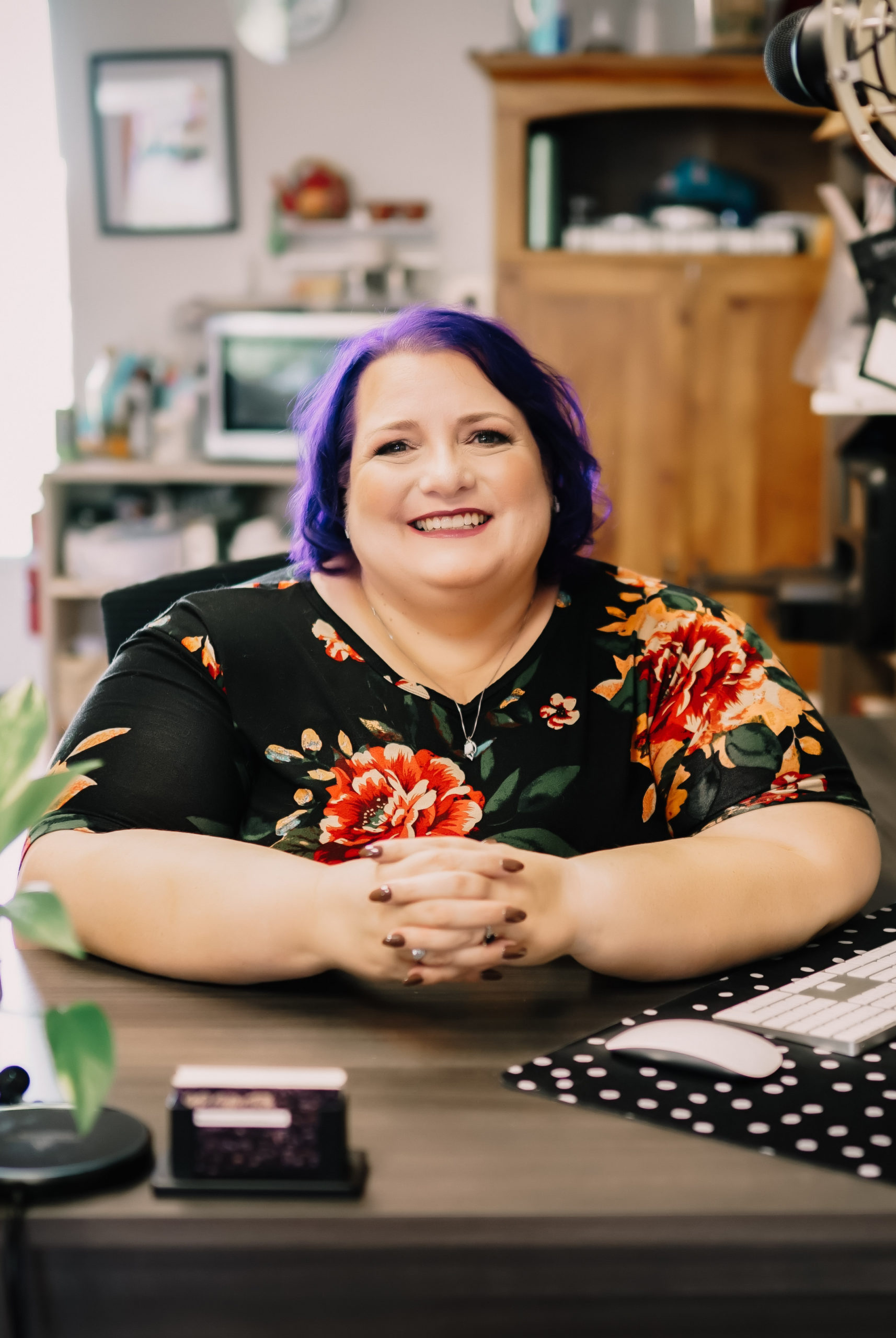
Michelle Frechette
Panelist and sponsorship organizer, moderator, and producer
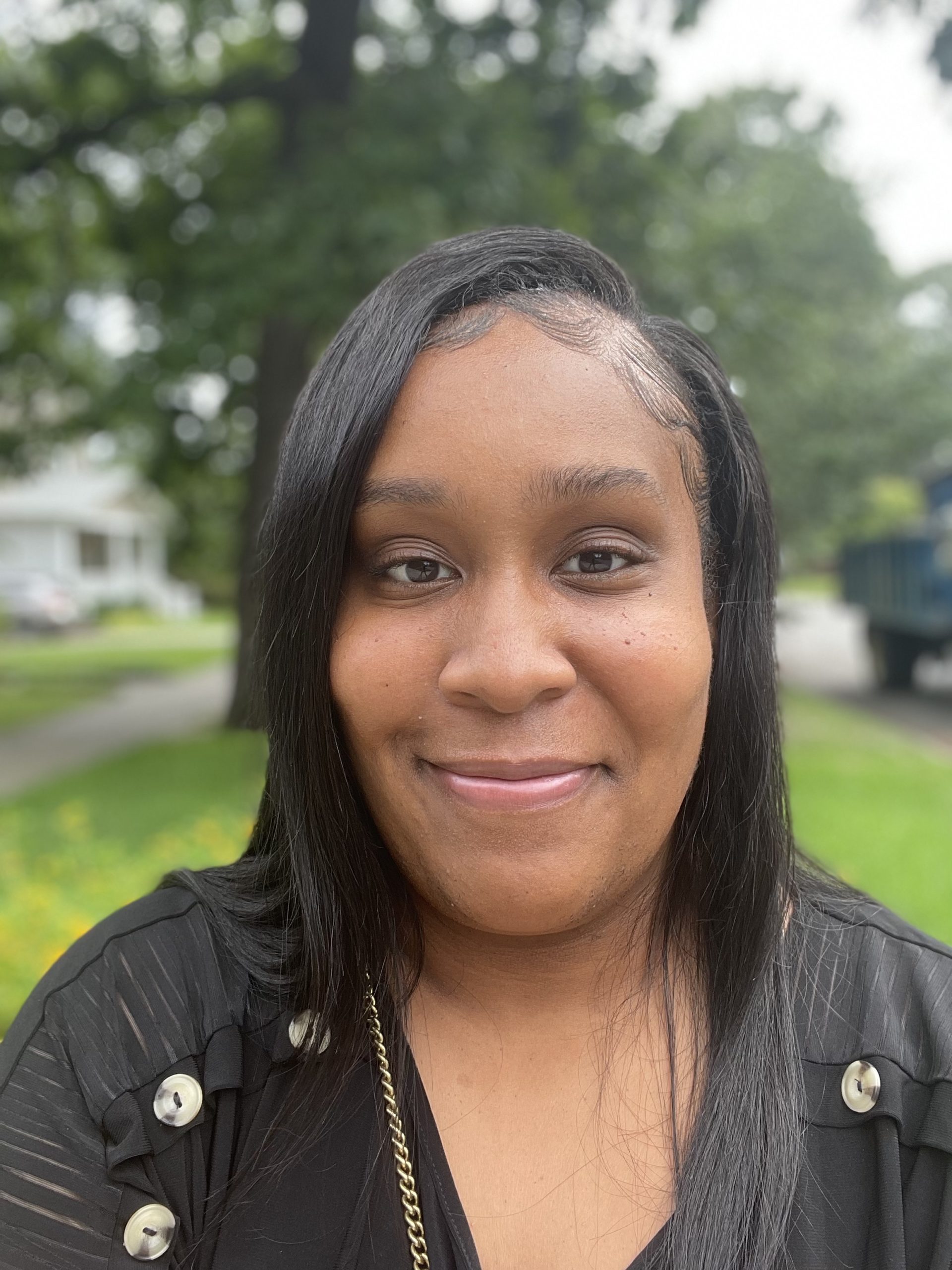
Nyasha Green
Moderator and social media manager.
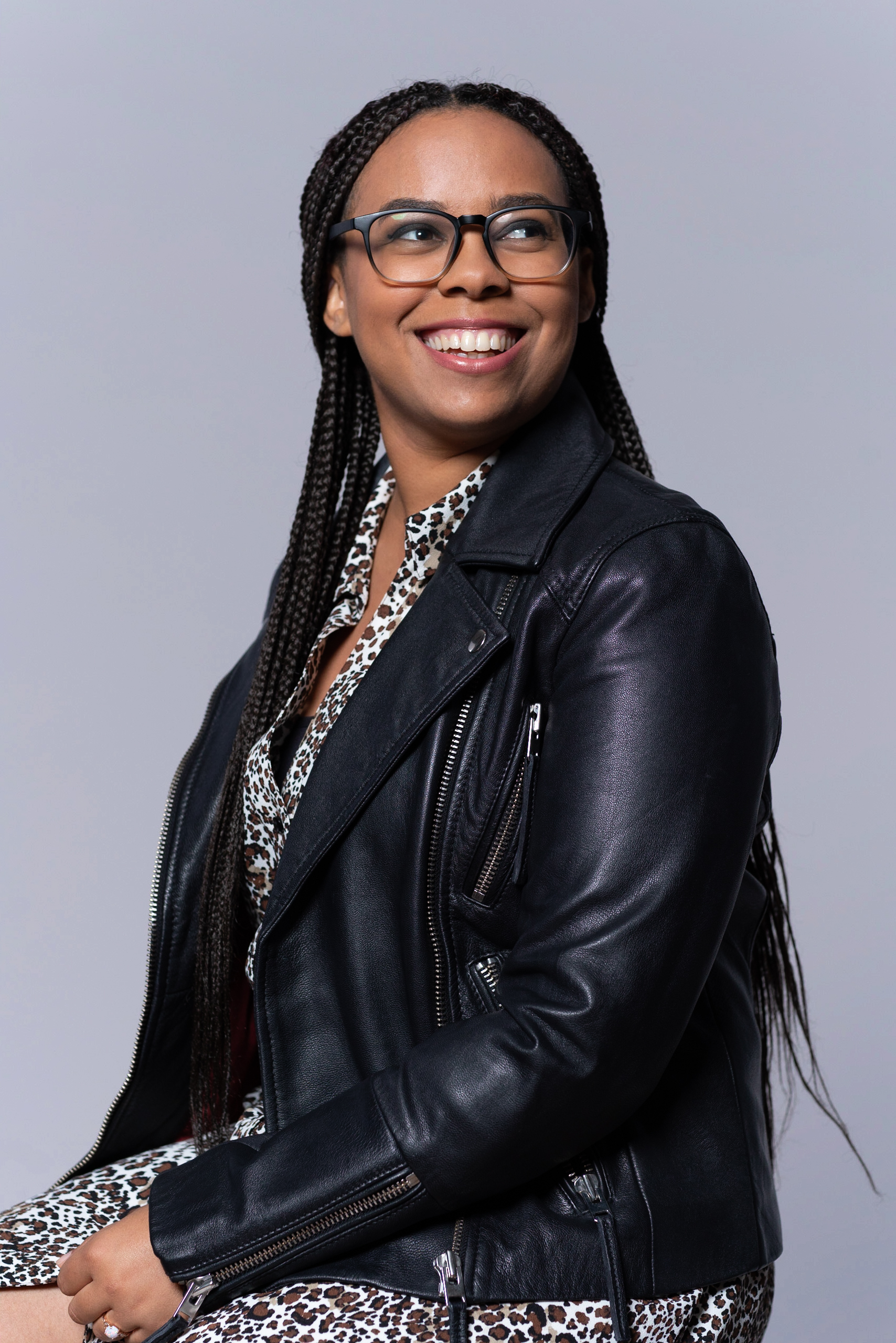
Allie Nimmons
Moderator, designer, editor and producer
Learn More About Underrepresented in Tech
Database
Use our database to connect with underrepresented folks to work with, or add yourself to find work and opportunities.
Podcast
Our weekly podcast discusses topics relating to underreprented people working in tech, as well as tips and advice for allies.
Newsletter
Our monthly newsletter contains news, updates, links, and more targeted toward the success of underrepresented people working in tech.
Our Services
Become a better ally. Pick our brains, or get help making your social media presence or your recruiting process more optimized for DEIB.

